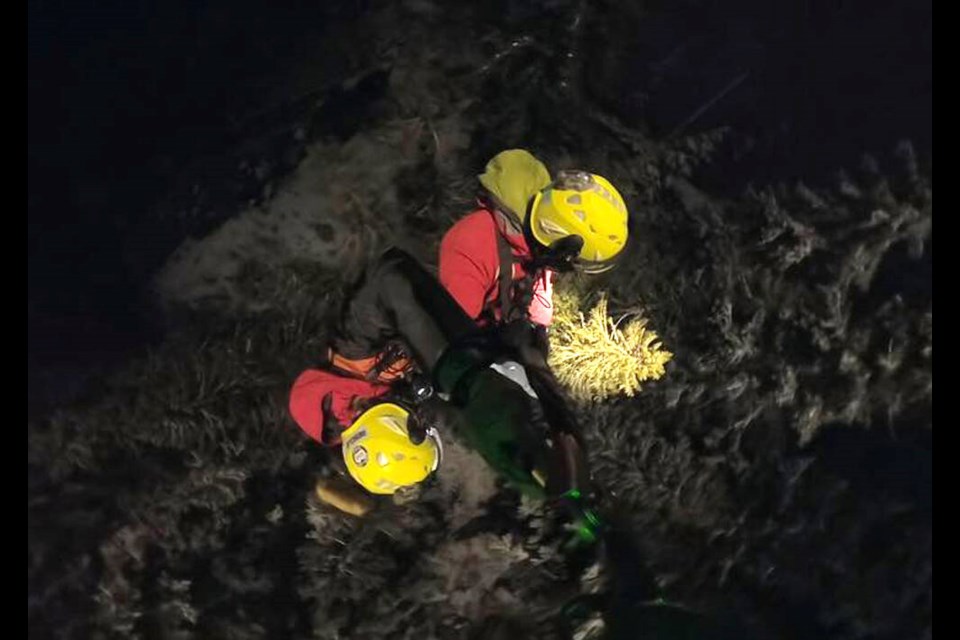North Shore Rescue has entered a new era in its mission, having performed their first ever hoist of a lost and injured snowboarder from a helicopter after darkness.
The team spent years lobbying Emergency Management B.C. for permission to use Talon Helicopter’s winch system after dark, only to be told no. After going public with their frustrations in October, the province relented.
On Thursday night, North Shore Rescue notched their first confirmed life saved using the night hoist – a Burnaby man in his 30s who had ducked the boundary rope at Cypress Mountain and then fallen about 3.5 metres near Strachan Creek, injuring his back.
“I’m not sure how he managed to get a cell signal where he was, like, it’s almost unheard of,” said Mike Danks, North Shore Rescue team leader.
They could tell from his cellphone’s “ping” location that he was about 100 metres above a North Shore Rescue supply but also in dangerous avalanche terrain.
At the time, a heavy storm of snow and freezing rain was expected, raising the risk profile of the rescue.
Talon Helicopter’s crew was ready at the Cap Gate SAR station within 35 minutes. With the helicopter team’s night-vision capabilities, they could easily spot the snowboarder’s cellphone light down a familiar gully.
They lowered two rescuers about 60 metres below the aircraft, who quickly assessed the subject and got him harnessed to be winched back up. They were flying out of the backcountry before the ground team sent in as back-up had even left the rescue base. The subject was later taken to be checked over at Lions Gate Hospital.
“He got home for Christmas. He’s going to be OK. If we didn’t have this tool, we’d still be working out there,” Danks said.
Previously, night hoists had only ever been carried out by the military, which uses Cormorant helicopters that aren’t well suited for mountain rescues.
Danks said having the ability to use the hoist at night was a “surreal” experience after years of back-and-forth with Emergency Management B.C. And, he said, it’s now proven its worth.
“This individual was basically evacuated from this spot, within a few hours in a very safe and efficient manner… We put the least amount of people at risk to get him out,” he said. “This is a significant milestone for the province of B.C., 100 per cent. I think this tool will be used far more frequently in the future.”
But, while rescues have never been more efficient or safe for the team’s volunteers and rescue subjects, Danks said, it’s also never been more expensive because they now require regular training and recertification.
“That’s primarily funded by donations,” he said. “If there’s ever a time that we need support, it’s now.”
It’s the first time this winter the team has been tasked with an out-of-bounds rescue, Danks said. The lure of untracked snow is deadly on the North Shore and too many people have lost their lives for it. he added.
“The reason it’s untracked is because it’s beyond the boundary and you’re getting into avalanche terrain. This is a good lesson,” he said. “It certainly could have been a tragedy. This could have been a recovery, if it wasn’t for the tool that we had last night.”



